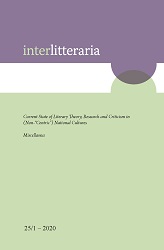Deictic Close Reading
Deictic Close Reading
Author(s): Arne MerilaiSubject(s): Poetry, Pragmatics, Cognitive linguistics, Estonian Literature, Theory of Literature
Published by: Tartu Ülikooli Kirjastus
Keywords: deixis; indexicality; emotional/modal deixis; deictic network; deictic plot; pragmapoetics; close reading; poetry;
Summary/Abstract: Inspired by practical didactics, this article suggests using pragmapoetic deictic analysis as a method to enrich close reading of poetry. When applying the pragmalinguistic theory of deixis and the analytic philosophical theory of indexicals to poetic texts, it soon becomes apparent that, in addition to traditional spatial, temporal, and personal deixis, it is also necessary to speak about emotional, or modal, deixis. The latter functions on a scale of positive and negative connotations, or, of subjective distance, which is the mental counterpart to spatial relations. In addition, poetry amplifies the intuitive deictic and egocentric quality of ostensive words of natural kind. On a formal level, however, we notice a congenital enhancement of discourse (or text) deixis, which manifests itself via self-reference using linguistic equivalence. This theory is exemplified by a deictic analysis of a short poem by Ene Mihkelson, which reveals the poem’s orientational reference system as a deictic network onto which an imaginary plot of the poem is projected. It should be noted that a deictic plot is wider than a lyrical/poetic plot, the latter being a concretization of the deictic potential created in the author’s or reader’s consciousness through the course of reading. Accordingly, we pass through three levels of analysis: (1) deictic network as the orientational frame of reference in the analyzed text, (2) deictic plot as the possible spatial and temporal dynamics of poetic thought within that frame of reference, and (3) lyrical plot as the concretization of a potential deictic plot in the conscious mind of the author or reader.
Journal: Interlitteraria
- Issue Year: XXV/2020
- Issue No: 1
- Page Range: 26-40
- Page Count: 15
- Language: English

